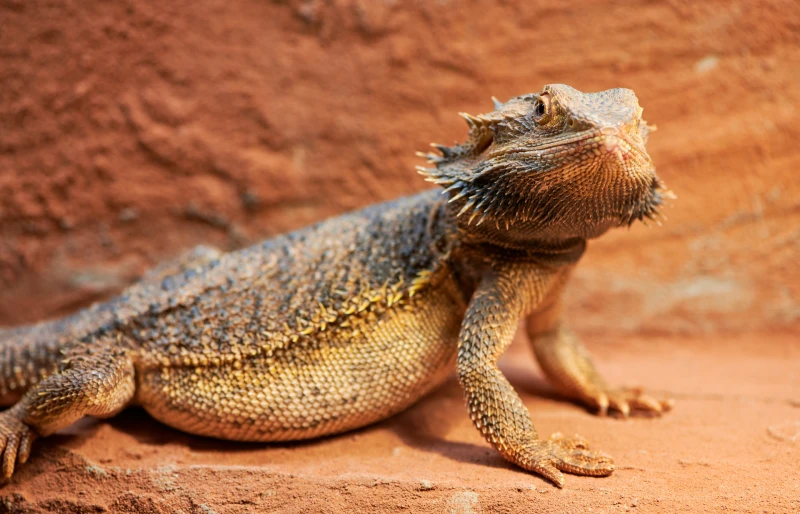Fancy Bearded Dragon vs. Bearded Dragon: The Differences (With Pictures)
Updated on
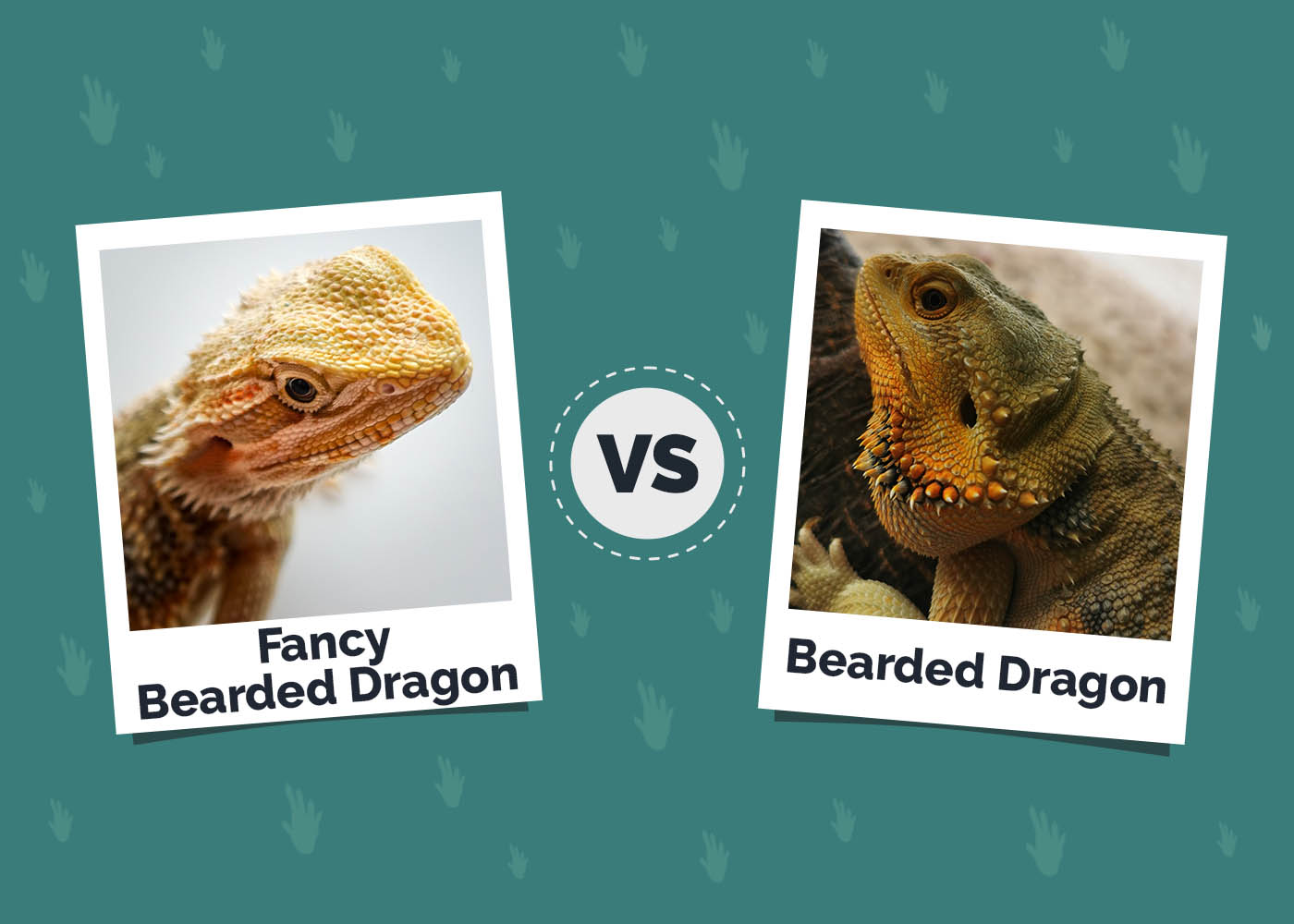
Click to Skip Ahead
Bearded dragons are among the most popular pet reptile choices for people worldwide. The Pogona vitticeps is native to Eastern and Central Australia. In the wild, they live in bushy, dry areas, deserts, and forests. They are typically tan with darker shades but can have various color morphs due to crossbreeding. In fact, that’s how fancy bearded dragons are created!
The “fancy bearded dragon” is the same species as the regular bearded dragon, meaning they’re both Pogona vitticeps.
However, due to crossbreeding, regular bearded dragons developed various color morphs and features, hence the name fancy bearded dragons.
Read on to learn more about these types of bearded dragons, discover their differences, and determine which is a more suitable pet option for you.
Visual Differences

At a Glance
- Average height (adult): 16–24 inches
- Average weight (adult): 14–17. 6 ounces
- Colors: Various color combinations, mainly bright colored, albino, etc.
- Lifespan: 10–15 years
- Grooming needs: Low
- Family-friendly: Yes
- Average height (adult): 16–24 inches
- Average weight (adult): 14–17. 6 ounces
- Colors: Tan, olive, beige, citrus, tangerine, gold, lemon, sunburst, ruby, blood, silver, gray
- Lifespan: 10–15 years
- Grooming needs: Low
- Family-friendly: Yes
Fancy Bearded Dragon Overview
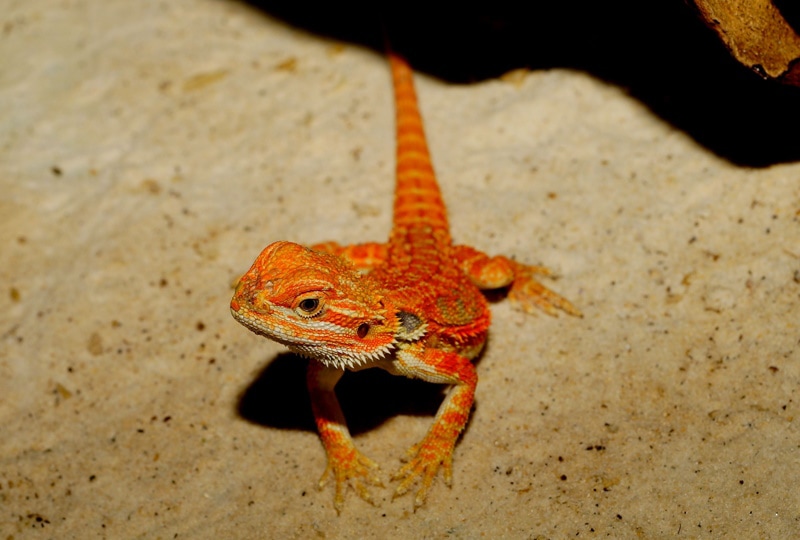
Many people believe that fancy bearded dragons are entirely a separate species from regular bearded dragons. It’s true that you’ll probably never see a fancy bearded dragon out in the wilderness, but these bearded dragons are actually the same species: Pogona vitticeps.
As fancy bearded dragons are created by breeding two regular bearded dragons, the genetics of the parents, particularly their dominant and recessive genes, are responsible for the final appearance of the baby fancy bearded dragon.
Appearance
Fancy bearded dragons represent all color morphs that don’t look like the standard bearded dragon. They are more colorful and brighter and can have different body features than regular bearded dragons.
Most of them are the same size, though, which varies between 16 and 24 inches, and they weigh between 14 and 17.6 ounces. Like regular bearded dragons, fancy bearded dragons have lifespans of 10–15 years.
- Standard morph — Triangular head and spiky beard and body | Tan, brown, yellow, red with orange or black markings
- Hypomelanistic morph — Triangular head and spiky beard and body | Light colored, unable to produce dark colors due to lack of melanin, usually pale yellow or white
- Amelanistic morph — Triangular head and spiky beard, and body | Albino with red eyes (no melanin)
- Zero morph — Triangular head and spiky beard and body | White/gray, may have darker sections around shoulders
- Microscale morph — Triangular spiky head, no spikes or scales on the back, tail, or sides | Bright, usually orange or yellow, with shoulder markings
- Leatherback morph — Triangular spiky head and spiky sides, no spikes on the back and tail | Olive with orange, pale, and dark markings
- Silkback morph — Soft, smooth skin, no spikes or scales | Bright colored, typically orange with gray markings
- Translucent morph — Translucent spikes and scales | Color changes with age, typically blue or white while young, and could become any morph during adulthood
- Dunner morph — Asymmetrical markings, similar to the standard morph | Bright colored, yellow or orange with pale or gray markings
- German giant morph — Triangular head and spiky beard, sides, and body | Bright yellow with dark markings
- Witblit morph — Small, spiky body, no spikes on the head | Light colored, pastel, dull colors such as tan, blue, and gray
- Wero morph — Triangular head and spiky beard and body | White with darker areas on the shoulders and tail base
- Paradox morph — Triangular head and spiky beard and body | Hatches solid colored but develops colorful, bright patterns with age
Personality / Character
Personality-wise, fancy bearded dragons are the same as regular bearded dragons. These lizards are friendly and social and like to be around humans. They’re mainly active during the day and like to climb, which is why they need plenty of space where they can relax and explore.
They mainly spend their days sunbathing, climbing, eating, or sleeping, but they also like to be held once they get acquainted with their owners. Fancy bearded dragons are as friendly as any lizard can be, which is why they make good pets for anyone who wants to own a reptile for the first time.
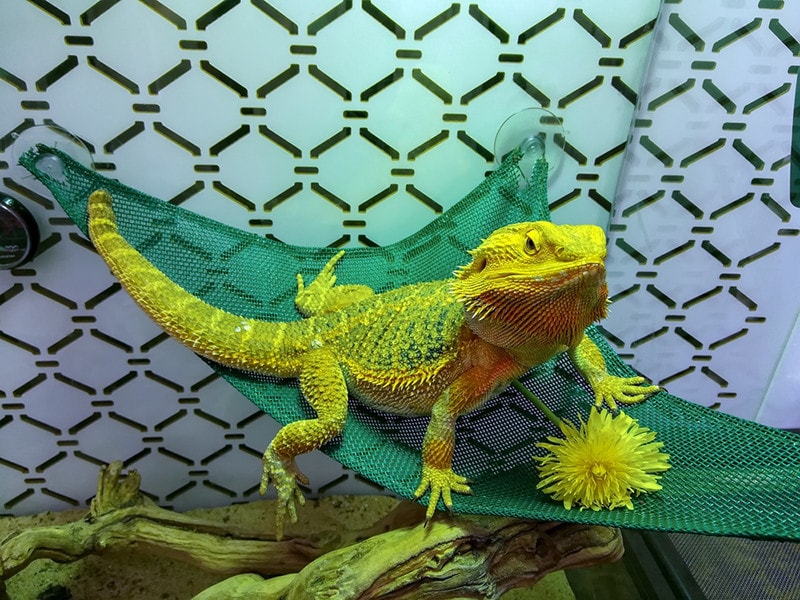
Health & Care
Fancy bearded dragons are typically as healthy as regular bearded dragons. However, certain fancy bearded dragon morphs could have more health issues, such as sensitive skin and poor overall health.
Although these problems rarely occur, they’re possible, especially from a non-reputable breeder. Always ensure that you get your fancy bearded dragon from a reputable breeder or pet store.
Besides that, fancy bearded dragons are low maintenance and don’t require much care. They need a bath a couple of times weekly, and they need their nails regularly trimmed.
Price
Fancy bearded dragons are typically more expensive than regular bearded dragons due to their unique appearance. The prices also vary between the fancy bearded dragon morphs, as some are rarer than others. The most expensive fancy bearded dragon color morphs are paradox, zero, and witblit morphs.
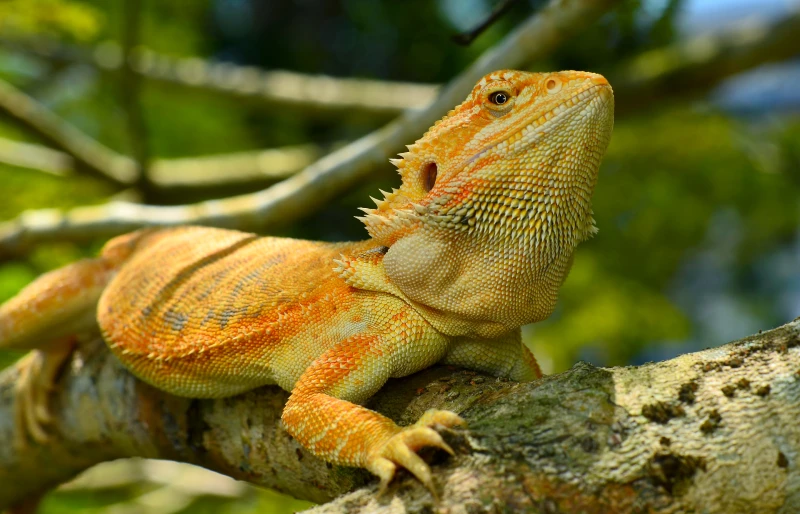
Suitable For:
Fancy bearded dragons are suitable for anyone looking for an exotic, low-maintenance companion. They can be great pet options for singles, couples, and even families, as long as you handle them with care. If you’re considering getting a reptile pet, fancy bearded dragons can be a great way to learn more about reptiles and connect with these colorful little creatures.
Bearded Dragon Overview
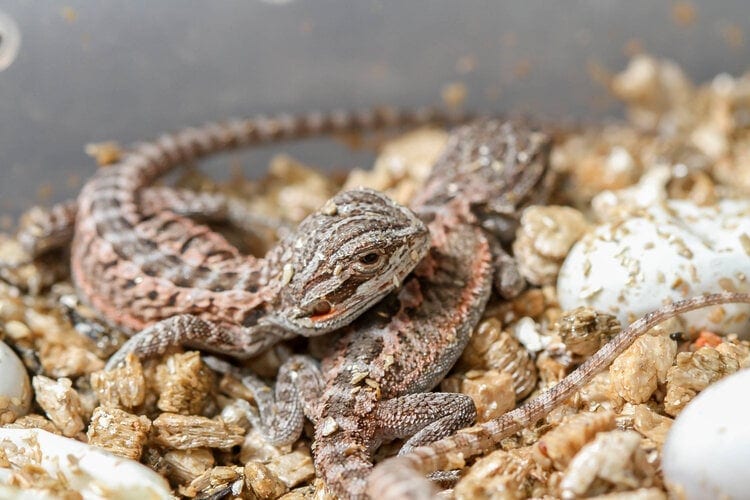
The regular bearded dragon is also known as the inland or central bearded dragon (Pogona vitticeps). In the wilderness, they are found throughout central and eastern Australia, mainly in deserts, forests, and dry, bushy environments.
These bearded dragons are the most common and are responsible for the creation of fancy bearded dragons.
Appearance
Bearded dragons are between 16 and 24 inches long and weigh around 14–17.6 ounces. They have broad, triangular heads, round and flat bodies, robust tails, and stout legs. Unlike with fancy bearded dragons that are extremely colorful, bearded dragons’ colors are typically darker and not as vivid.
- Olive
- Tan
- Sunburst
- Citrus
- Ruby
- Blood
- Gray
- Silver
- Gold
- Tangerine
Personality / Character
Bearded dragons are typically social, calm, and docile. They like human presence and to be held, which is why they make great human companions. These reptiles are active during the day, typically spending their days climbing and sunbathing.
Male bearded dragons are slightly more aggressive and territorial than females, which is something to keep in mind before getting one as a pet, especially if you want to get more bearded dragons later.
Bearded dragons are friendly in a cute reptile way, and they can develop a special bond with their owners. They can typically recognize their loved ones by their smell and the sound of their voice, and they will love to hang out after they get comfortable around you.
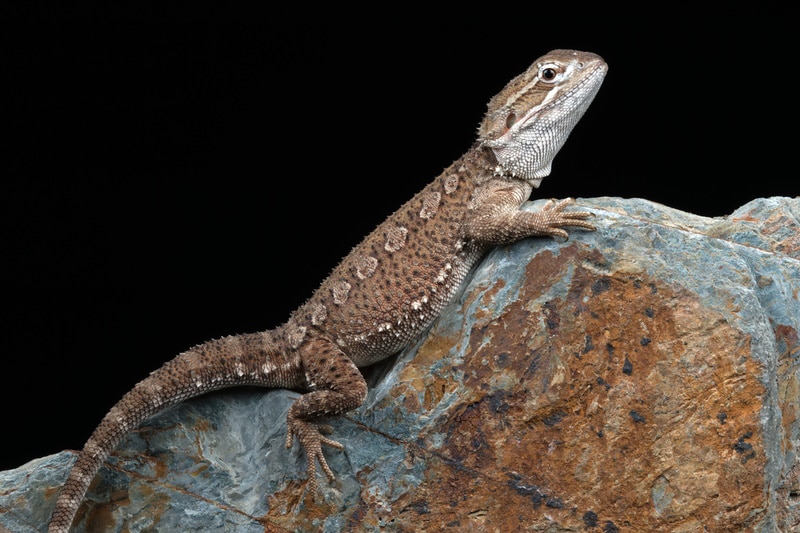
Health & Care
Bearded dragons are generally healthy animals, and they can live long lives of 10–15 years. These reptiles require yearly health checks, though, as they are predisposed to several health problems, including:
- Renal disease
- Periodontal disease
- Adenovirus 1
- Follicular stasis
- Coccidiosis
- Nutritional secondary hyperparathyroidism
Just like fancy bearded dragons, they need bathing a couple of days a week, and they need their nails trimmed regularly.
When handling bearded dragons, do it with care to avoid hurting them. Also, remember to wash your hands before and after touching a bearded dragon, as they can transfer diseases such as Salmonella.
Price
Since regular bearded dragons have a dull appearance compared to fancy bearded dragons, their price is also lower. If you want a bearded dragon but don’t want to spend that much money, regular bearded dragons should be your choice. They are still pretty and look exotic but are way more affordable.
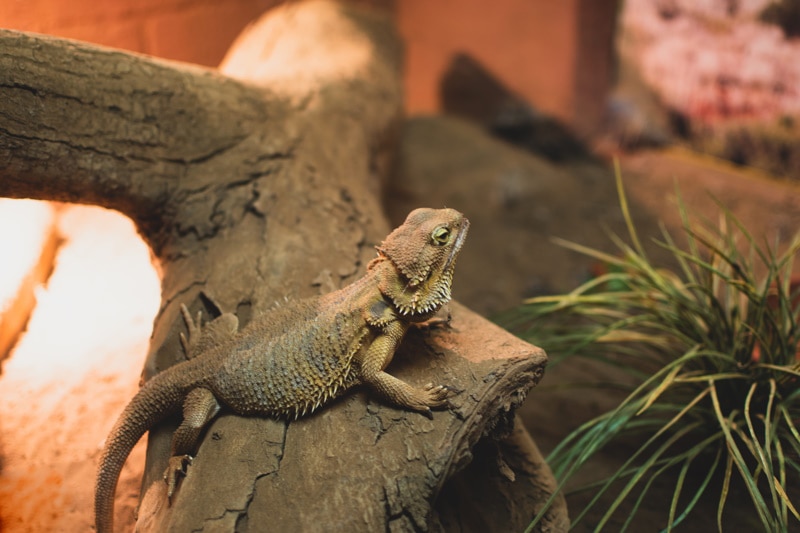
Suitable For:
Just like fancy bearded dragons, regular bearded dragons are suitable for anyone who wants to own a reptile. They can be great pets for families with kids, couples, and singles—anyone who has a love for reptiles can keep bearded dragons as pets!
Which Bearded Dragon Is Right for You?
Bearded dragons and fancy bearded dragons are practically the same, except that fancy bearded dragons look more exotic due to their morphs. Most are colorful, while others have distinctive body features.
Overall, both regular bearded dragons and fancy bearded dragons make great pets because they have the same personalities.
If you’re looking for a bearded dragon with a more exotic look and are willing to spend a decent amount of money, fancy bearded dragons may be the choice for you. If you don’t want to splurge and want a simple-looking beardie, you should definitely consider a regular bearded dragon.
See Also:
- Bearded Dragon vs Leopard Gecko: The Key Differences (With Pictures)
- Iguana vs Bearded Dragon: The Main Differences (With Pictures)
Featured Image Credit: (L) Aaron Patrick, Shutterstock | (R) Tay Chee Keong, Shutterstock



